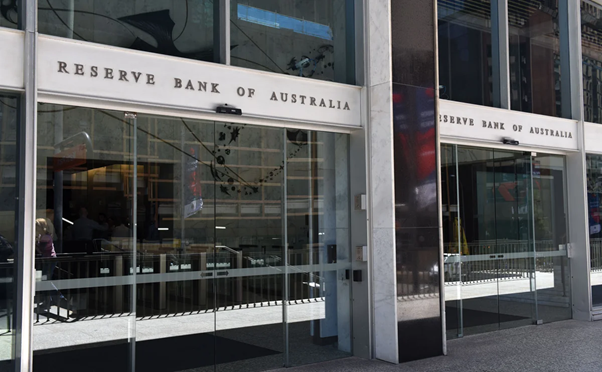Commonwealth Bank has restored its services following a widespread outage that occurred on Thursday, interrupting payments, online banking, and ATMs throughout Australia. Many customers were unable to have transactions, withdraw cash, or access their accounts due to the disruption that started at approximately 11:30 am AEST. At 12:45 pm, the bank confirmed that restorative works were underway. The bank declared that all functions were restored at 2:30 pm AEST.

On its website, the bank posted an apology, saying, “CommBank banking services, including payment, online access, and ATMs, are operational. It apologized to customers and was grateful that they were so patient and understood the inconvenience the interruption caused. Although it was disrupted, the Commonwealth Bank ensured that no physical branches were closed.
Customers are Disrupted by a Midday Outage
The blackout was at lunchtime in major towns and therefore, it impacted many users throughout the nation. The problems that the customers complained about were failed payments, unreachable accounts, and broken ATMs. A lot of them resorted to social media to express their anger, and some even could not afford basic needs such as petrol or food.
One customer wrote, “App down again, can’t pay petrol,” and another one wrote, I can’t transfer, can’t see my accounts, and can now even log in halfway through shopping. Some of them claimed that the ATMs automatically closed during the crash, and they were unable to obtain cash. Other clients could not transfer money between accounts or make payments online.

Downdetector, a service failure tracking site, had over 7,000 reports of incidents by Commonwealth Bank customers as of 12:30 pm. The magnitude of the disruption was due to the large number of customers served by this bank, as one out of every three Australians accessed the services of the Commonwealth Bank, and the mobile banking application had about 13 million daily logins.
Bank Reacts and Starts Recovery Services
Commonwealth Bank was one of the first banks to recognize that something had gone wrong, and they promised customers that they were working around the clock to restore the services. According to a spokesperson, they were unavailable for some services about an hour before they began being restored.
The official communication channels used by the bank instructed customers to go to the service updates page of the bank to get real-time information. At 2:44 pm AEST, the bank posted another statement that it had restored all its services. Commonwealth Bank once again apologized and thanked customers for the inconvenience.

By 2:30 pm AEST, Commonwealth Bank confirmed services had been fully restored.
The bank did not reveal the nature of the issue that led to the outage or what it is by mentioning it as an issue in its reports. The insufficient elaboration has raised concerns about what caused the disruption and how future incidents could be avoided.
Larger Issues of the Reliability of Digital Banking
This malfunction occurred shortly after the publication of the latest financial stability review by the Reserve Bank of Australia, which warned that the growing complexity of digital banking systems is a threat to the reliability of services. The review reported an increased risk of the occurrence of occasional incidents during the operations due to the increased implementation of digital technologies, as well as the changes to the reputation in case of data loss or distortion.
Cash advocacy organizations used the outage to remind Australians of the need to have physical money as a backup in the event of digital service outages. We have no alternative to cash, which is 100 per cent dependable at all times, according to Jason Bryce of Cash Welcome. All digital systems require updates and, unfortunately, have unwanted failures.
The event has sparked the discussion of the transition to the cashless economy in Australia and whether the banking industry is capable of providing continuous digital service. As banks keep consolidating physical infrastructure in favor of the internet, disruptions such as the one on Thursday make one wonder how resilient and consistent the key financial services can be.
Past Records indicate the past outages
This recent outage of the Commonwealth Bank is an occurrence of similar ones that have been experienced in recent years. During the second quarter of 2025, the bank had recorded a 100 per cent availability of the majority of its services, except online banking, which had almost 10 hours of downtime. In the first quarter of this year, online banking was down or inaccessible for slightly more than two hours.
The fourth quarter of 2024 was the last time that the bank card payments network crashed, which lasted one hour and 59 minutes. In the second quarter of 2024, its ATM network experienced a significant failure, and services were unavailable for over 32 hours. In 2021, the bank suffered three independent outages within two months, as well as had to apologise for a nationwide internet banking outage in June 2023.
The Reserve Bank, under the existing regulations, requires banks to report any major outage that exceeds 30 minutes. Even though the payment services are usually very reliable, these experiences can disrupt the customers as well as businesses and the overall economic activity.
Operational Risk Regulatory Focus
In July 2025, a new prudential standard- CPS 230 was introduced, which obliges banks to take control of risks involving their utilization of external service providers and digital systems. The regulation is meant to enhance operational robustness in the increasing complexity of financial technology infrastructure.
The chief executive of Commonwealth Bank, Matt Comyn, has in the past stressed the need to have a world-class digital service. Similar to other banks, the bank must release information about its digital services in terms of both performance and reliability to enable regulators and customers to evaluate the disruption frequency and the time to fix it.

With the ongoing development of digital banking, the adherence to the regulation of CPS 230 and other rules of this kind among financial institutions will be in the focus of interest. These are standards that are meant to minimize the chances of outage instances and provide timely recovery whenever disturbances happen.
Customer Reliability and Web Reliability
The outage has also led to a new debate on how customers depend on digital banking platforms and the problem banks have in fulfilling their expectations of 24/7 availability. Any failure will result in millions of Australians missing out on Commonwealth Bank services, which they use daily to carry on with their daily lives, such as shopping in their local shops and making bill payments.
There have been complaints of frequent outages, enabling customers to complain, especially given that banks are pushing towards digital and reducing physical infrastructure. The case has brought to light the conflict between technological innovation and the necessity of financial services that are reliable and always available.
While the bank has apologised and restored operations, customers and regulators alike are seeking assurances that future disruptions will be minimised. The ongoing investigation into the cause of the outage will likely inform future measures to strengthen the resilience of the Commonwealth Bank’s digital network.
Also Read: FX Flows & Metals: How Currency Movements Are Driving Mining Stock Returns
Final Thoughts
Commonwealth Bank has fixed a national outage that stopped payments, online banking, and ATM services in the bank for several hours, impacting thousands of customers. The breach, which started late in the morning on Thursday, was in line with broader regulatory alerts about the dangers associated with more advanced digital banking models.
Services have just gone live, but the incident has once again brought up concerns about the stability of Australia’s banking infrastructure and the problem of switching to a more fully digital financial system. With stricter regulation standards and adjustment of banks to technological changes, the continuity of access to necessary services is the key issue of focus for both institutions and customers.
Frequently Asked Questions (FAQs)
- What caused the Commonwealth Bank outage today?
Commonwealth Bank has not revealed the exact cause of the outage, describing it only as an “issue” that affected payments, online banking, and ATMs. - How long was Commonwealth Bank down?
The outage began around 11:30 am AEST and services were fully restored by 2:30 pm AEST, lasting roughly three hours. - Were ATMs and payments affected during the outage?
Yes. Customers reported failed payments, inaccessible accounts, and ATMs going offline during the disruption. - Has Commonwealth Bank explained the outage?
No detailed explanation was given. The bank acknowledged an “issue” but did not provide technical details. - How many customers were impacted by the CommBank outage?
Downdetector logged over 7,000 incident reports. Given that one in three Australians uses the Commonwealth Bank, the outage likely affected millions of customers. - What should I do if my Commonwealth Bank payment failed?
Failed or pending transactions usually reverse automatically. Customers should check their transaction history or contact the bank for assistance if issues remain. - Does Commonwealth Bank refund failed transactions after outages?
Yes. Commonwealth Bank generally reverses failed transactions caused by system errors, ensuring customers are not financially disadvantaged. - How often does CommBank experience outages?
The bank has had several outages in recent years, including online banking downtime in 2024 and multiple disruptions in 2021 and 2023. - What is CPS 230, and how does it affect banks in Australia?
CPS 230 is a prudential standard introduced in July 2025 requiring banks to strengthen risk management of external service providers and digital systems to ensure operational resilience. - Why is cash still important during digital banking failures?
Cash is 100% reliable and can be used when digital banking services fail. Advocacy groups stress the importance of keeping cash available as a backup.












